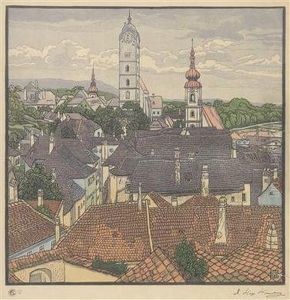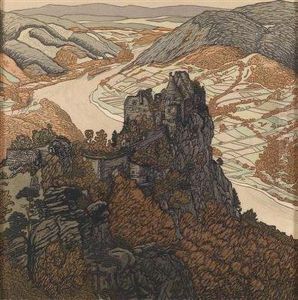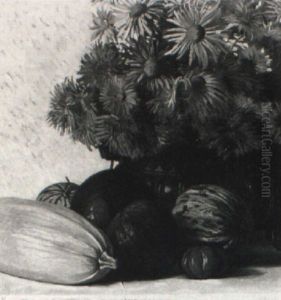Hugo Henneberg Paintings
Hugo Henneberg was an Austrian photographer born on July 27, 1863, in Vienna. He was part of the pictorial photography movement in the late 19th and early 20th centuries, an approach emphasizing aesthetic principles and visual effects rather than just documentation through photography. Henneberg was interested in the artistic potential of the medium and is known for his landscape and architectural photographs, which often employed innovative techniques and printing processes to achieve painterly effects.
Henneberg studied architecture at the Technical University of Vienna but was drawn to photography, which he viewed as a means of artistic expression. He became a member of the Vienna Camera Club and was significantly influenced by the work of other pictorial photographers of the time, such as Heinrich Kühn and Hans Watzek. Together with Kühn and Watzek, Henneberg formed a group known as the 'Trifolium' (also referred to as 'Kleeblatt' in German) in 1897. The group was committed to promoting photography as a fine art.
The Trifolium was known for their experimentation with different photographic processes, including gum bichromate, oil prints, and pigment prints, which allowed for greater manipulation of the image and imbued their photographs with a dream-like, atmospheric quality that was reminiscent of Impressionist painting. Henneberg, in particular, was celebrated for his natural landscapes that captured the ethereal interplay of light and shade, often utilizing long exposures and soft-focus techniques to achieve his distinctive style.
Hugo Henneberg's work was exhibited in numerous exhibitions throughout Europe, and he contributed to the advancement of photography as an accepted art form alongside his contemporaries. His photographs are characterized by a sense of harmony and tranquility, and they often reflect his architectural background through the structured composition and attention to form.
Henneberg's career in photography was relatively brief, and he eventually returned to his original profession of architecture. He passed away on July 11, 1918, in Gmunden, Austria. Despite his short career in the field, Henneberg's contributions to pictorial photography remained influential, and his work continues to be appreciated for its artistic merit and innovation in the realm of photographic art.



